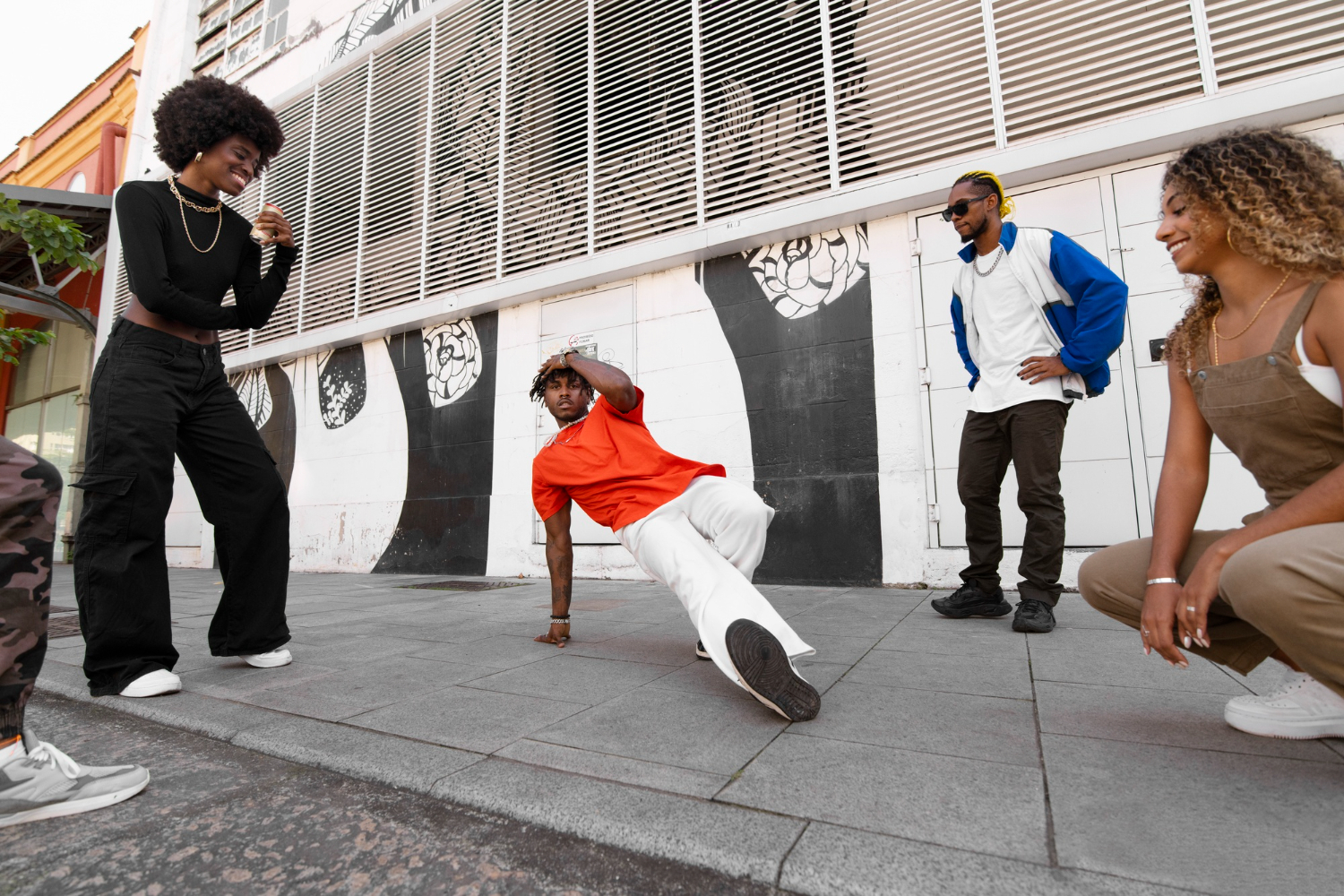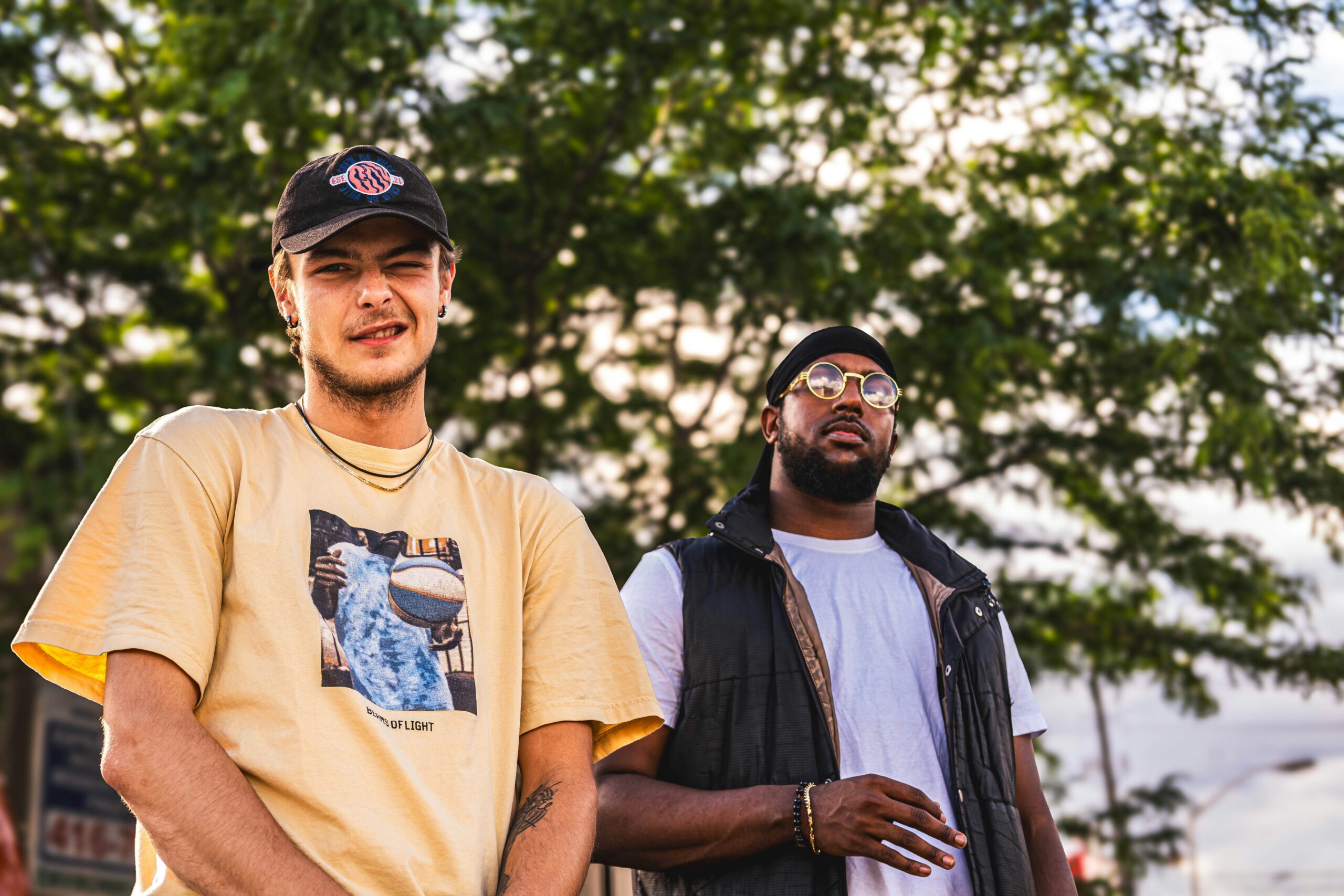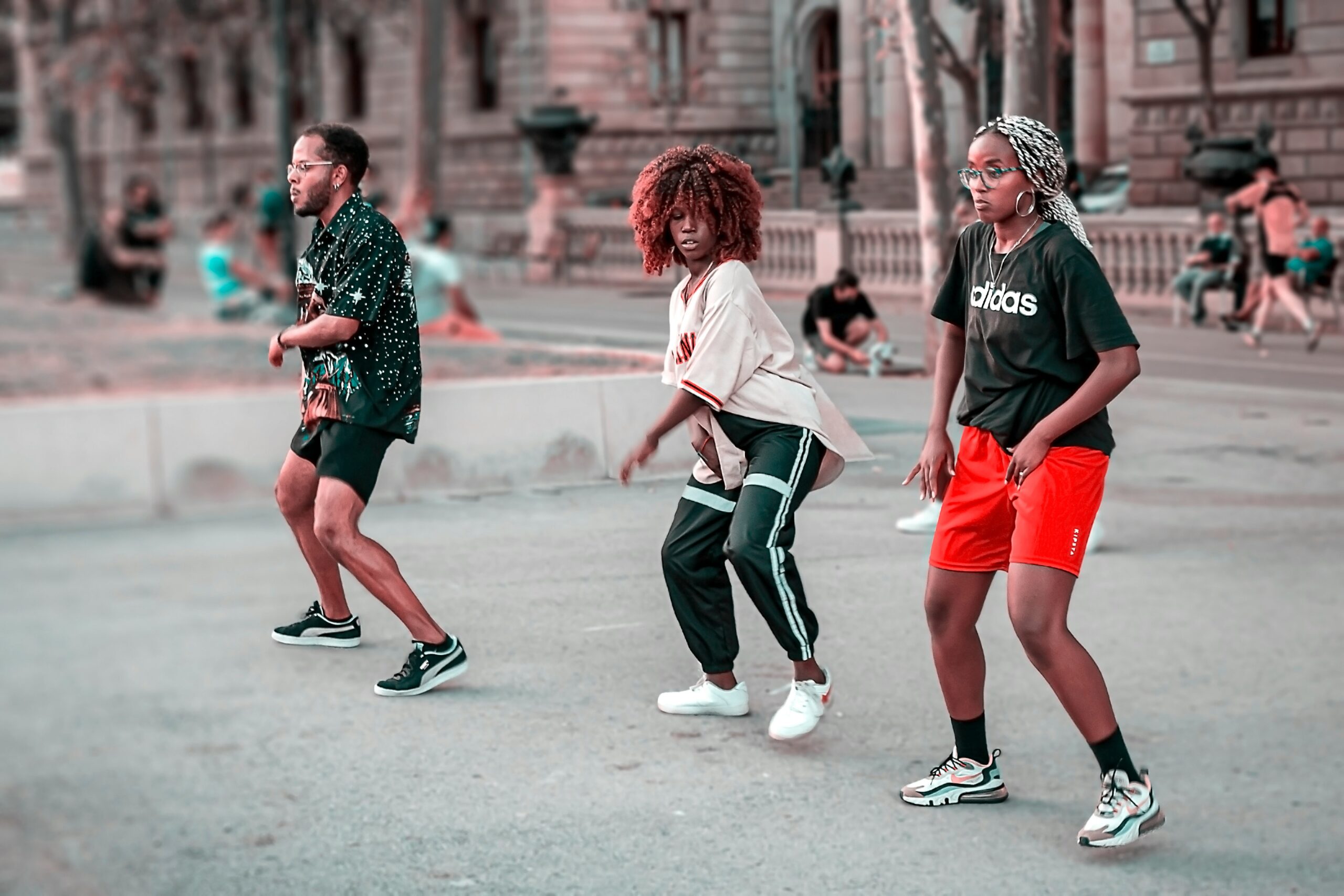
The Influence of Hip-Hop & Pop Culture on Street Fashion
Street fashion is more than just clothing—it expresses identity, culture, and social movements. Hip-hop and pop culture are at the heart of this evolution, which have profoundly shaped what we wear, how we wear it, and why it matters. Hip-hop fashion has changed a lot. It started with oversized jerseys in the 90s. Now, it features collaborations with high-end streetwear. These trends keep reshaping global style.
Read our blog to learn how music shapes style, the growth of key people in urban fashion, and hip-hop culture’s effect on modern fashion.
The Birth of Hip-Hop & Early Fashion Influences

The 1970s: Hip-Hop’s Roots in Street Style
Hip-hop emerged in the Bronx, New York, in the 1970s, blending music, dance, and visual art. The early hip-hop style focused on practicality and affordability and often depicted real-life experiences of urban living.
- Workwear staples: Carhartt and Dickies are popular for being durable and affordable.
- Tracksuits and sneakers: Adidas, Puma, and Pro-Keds joined the trend. Breakdancers wanted flexibility and comfort.
- Bucket hats & Kangol caps: Accessories were crucial in defining early hip-hop style.
These elements shaped hip-hop’s bond with fashion. They showed that style can come from the streets, not just from high-end designers.
The 1980s: The Rise of Logo Culture & Streetwear
Dapper Dan & the Luxury Knock-Off Era
The 1980s saw hip-hop’s growing love for luxury fashion, partly thanks to Harlem’s legendary tailor, Dapper Dan. He transformed logos from top brands like Gucci, Fendi, and Louis Vuitton and created unique streetwear for rappers and athletes.
- Rappers embraced designer logos, turning them into symbols of success and aspiration.
- Oversized jewellery, fur coats, and bold prints became synonymous with hip-hop wealth.
- Sneakers evolved as status symbols with the emergence of exclusive collaborations.
This decade showed how hip-hop can shape mainstream fashion. It opened doors for high-end brands to recognise urban culture.
The 1990s: Baggy Silhouettes & Sportswear Domination
The Golden Era of Hip-Hop Fashion
The 90s is often called the “golden era” of hip-hop, both musically and in style. Artists like Tupac, The Notorious B.I.G., and Wu-Tang Clan defined a bold, individualistic look.
- Baggy jeans & oversized jerseys: Brands like FUBU, Karl Kani, and Phat Farm catered specifically to hip-hop culture.
- Timberland boots & workwear aesthetics: Represented resilience and street authenticity.
- Sportswear dominance: Nike, Reebok, and Adidas surged in popularity as hip-hop stars sported their gear.
Hip-Hop & Sneaker Culture
Sneakers became crucial to hip-hop fashion trends, with artists collaborating with major brands.
- Run-D.M.C. x Adidas (1986): The first-ever music sneaker endorsement with the Adidas Superstar.
- Air Jordans’ rise: Michael Jordan’s sneakers transcended basketball, thanks to hip-hop’s endorsement.
- Nike Air Force 1 & Reebok Classics: Became streetwear essentials.
The 90s proved that hip-hop wasn’t just influencing fashion but leading it.
The 2000s: Bling Era & Designer Collaborations

Luxury Meets Hip-Hop
With rap becoming mainstream, artists embraced high-end designers more than ever. Music’s influence on style was undeniable as hip-hop stars became brand ambassadors.
- Jay-Z & Rocawear: Blended luxury aesthetics with street credibility.
- Kanye West & Louis Vuitton (2009): Set the stage for rappers to become designers.
- Pharrell Williams x Billionaire Boys Club: Merged hip-hop with skate culture fashion.
The Influence of Music Videos
In the early 2000s, music videos highlighted luxury brands. As a result, labels like Gucci, Prada, and Versace became aspirational for hip-hop fans. Urban fashion evolution was increasingly influenced by what fans saw their favourite artists wearing on TV.
The 2010s: Streetwear & High-Fashion Fusion
The Rise of Streetwear Powerhouses
Hip-hop and streetwear became fully intertwined in the 2010s, leading to:
- The dominance of Supreme, Off-White, and Yeezy.
- Collabs between hip-hop artists and luxury brands, such as Travis Scott x Dior.
- Rappers launching their clothing lines, redefining the business model.
Athleisure & Everyday Luxury
Hip-hop’s casual-meets-luxury aesthetic reshaped global fashion:
- Hoodies & designer joggers became wardrobe staples.
- Statement sneakers overtook traditional dress shoes.
- Logo-heavy designs returned, echoing the 80s Dapper Dan era.
Artists like Drake, ASAP Rocky, and Kendrick Lamar changed the game. They showed that hip-hop fashion now leads to mainstream style.
The 2020s: The Future of Hip-Hop & Street Fashion
Sustainability & Ethical Fashion
As the industry evolves, artists and brands are shifting towards sustainability.
- Kanye’s Yeezy focuses on sustainable materials.
- Pharrell’s Human Race promotes ethical production.
- Recycled & upcycled streetwear is gaining traction.
Digital Fashion & NFTs
The next stage in urban fashion evolution is digital:
- Hip-hop artists are embracing NFT fashion collections.
- Virtual fashion in the metaverse allows custom streetwear avatars.
- Blockchain authentication is preventing counterfeit luxury goods.
Hip-hop is not just influencing fashion—it’s pioneering its digital future.
Hip-Hop & Pop Culture Continues to Shape Street Fashion

Hip-hop fashion trends have redefined global style, from the streets of the Bronx to the runways of Paris. Music’s influence on style has turned streetwear into a luxury market, proving that fashion is more than just clothing—a movement.
As the urban fashion evolution continues, one thing remains clear: hip-hop and pop culture will permanently set the trends, not follow them.
What’s your favourite era of hip-hop fashion? Share your thoughts in the comments!

